Your Burning Questions About Whistler – Answered!

If you’re planning a trip to Whistler, you no doubt have a lot of questions you need answered before booking. When should you come? When is the snow best? What can you do in summer? Actually, hold on, where even is Whistler?!
Well, you aren’t the first person to wonder about this incredible town we call home. So because we love this place, and we want everyone to come and visit us, we’ve answered some of the most common questions we get asked every day. Dig into all this insider knowledge, and you’ll be well on your way to planning the trip of a lifetime.
Whistler Mountain Statistics: What You Need to Know
It’s the biggest ski resort in North America, with a reputation around the world for incredible skiing and boundless terrain. But you want details: and we can provide them. We’ve collected all the key statistics about Whistler Blackcomb into one handy guide, just for you.
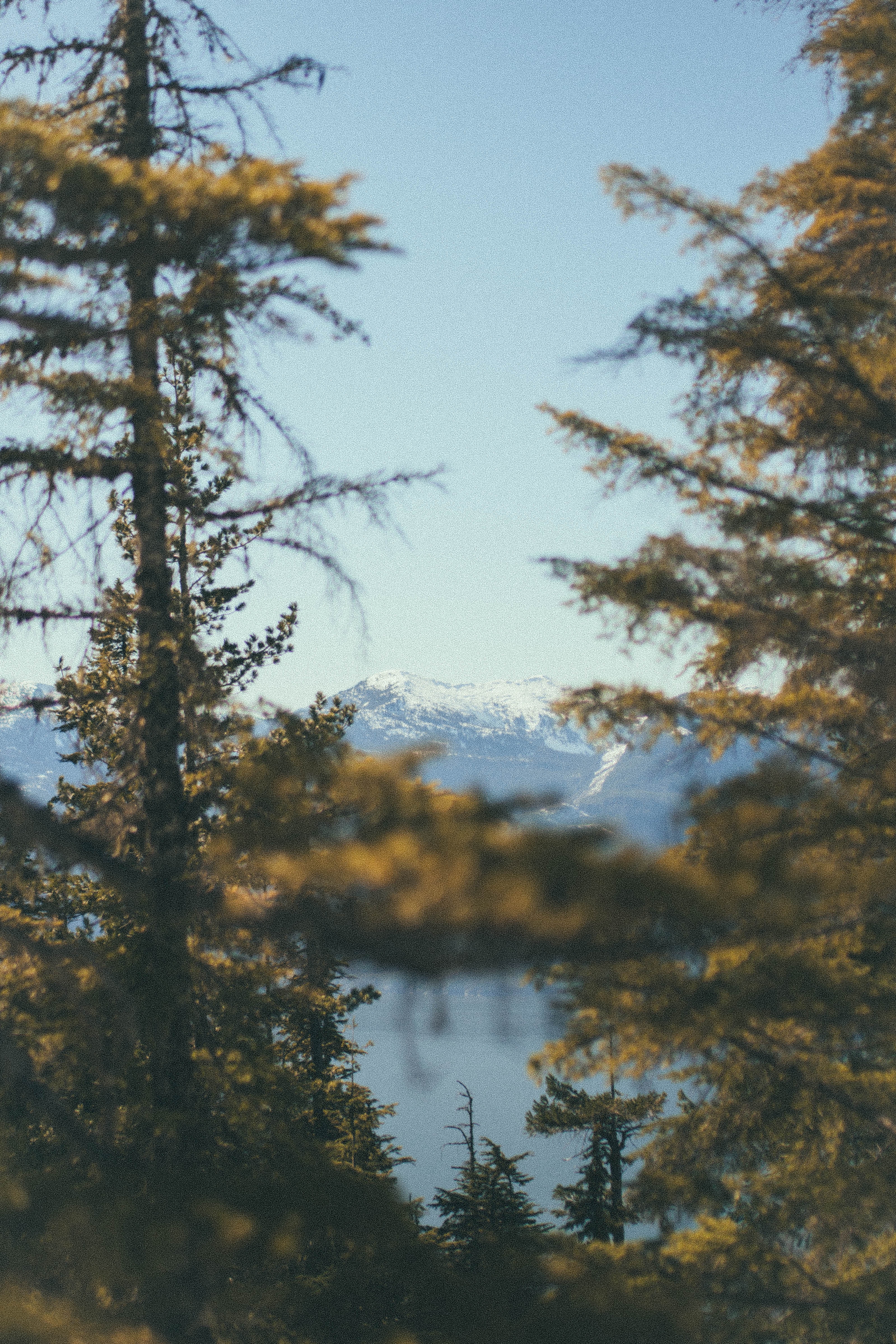
Whistler Blackcomb has a lot of stats to comb through.
How much snow does Whistler get per year?
Whistler is blessed with an average snowfall of 11.7m (38.4 ft) per year. That’s the height of 3.5 elephants! There is quite a bit of variation though: you can expect anywhere from 9 – 15m of snow per season, depending on how kind the snow gods are feeling.
What is the record for snowfall on Whistler mountain?
In 2010/11, we got a ludicrous 15.79m of snow in one season! Everyone rejoiced, and no one got any work done that year.
What is the best month to visit Whistler for snow?
March is renowned as one of the best months for snow in Whistler, with the legendary “March madness” bringing an average of 2.5m snow every year. December and January are also reliable months for powderhounds to visit. November gets the highest snowfall, but as the mountain only opens for the last 10 days of the month, it’s not the best time to plan a ski trip.
Here’s the average snowfall for each month in Whistler:
- November – 2.3m
- December – 2.1m
- January – 2.2m
- February – 1.5m
- March – 2.4m
- April – 0.9m
Whistler Blackcomb Terrain Statistics
What is the altitude of Whistler?
The peak of Whistler mountain is at 2,182m (7,160ft) and Blackcomb peak is at 2,284m (7,494ft). In comparison, the village is 675m (2,214ft), which gives a huge 1,609m (5280ft) of vertical to ski!
How much skiable terrain does the mountain have?
Across Whistler and Blackcomb, there’s 8,171 acres of skiable terrain. That’s nearly two times the ski area at Lake Louise! Whistler has slightly more to offer than Blackcomb – 4,757 acres vs. 3,414 acres.
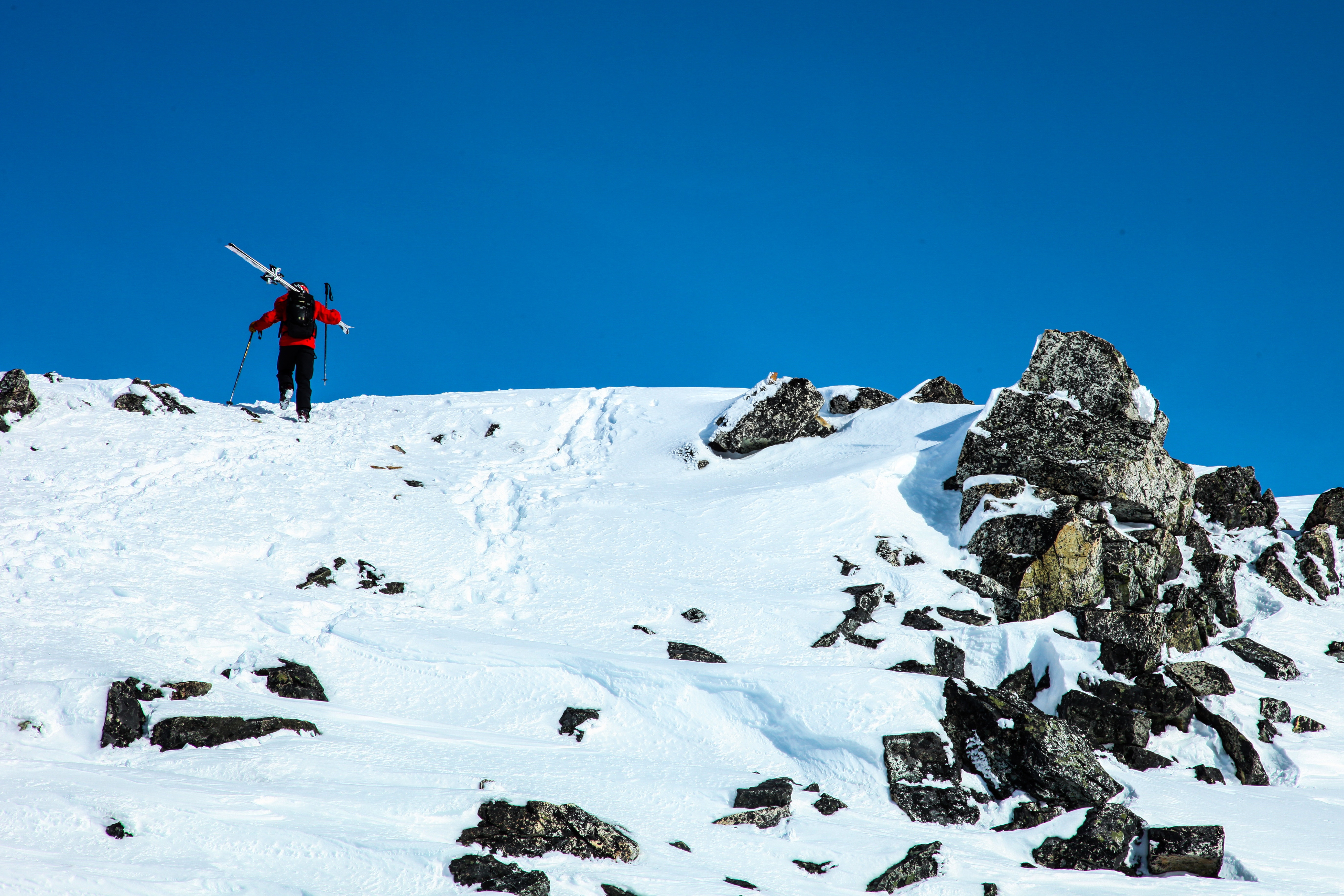
A snapshot of Whistler’s peak.
What type of terrain does Whistler have?
Every type of terrain you could ever wish for! From cruisy beginner trails to nerve-wracking big mountain couloirs, you can find it all at Whistler Blackcomb. There are over 200 runs, 16 alpine bowls and no less than three glaciers!
About 55% of all the skiing in Whistler is classfied as “intermediate” – blue and black runs – with a healthy 20% for beginners and 25% reserved for experts. Blackcomb has slightly less beginner terrain (15%) and more of the gnarly stuff (30%).
Does Whistler have snow parks?
Of course! And you’ll spot plenty of pros testing themselves them – Whistler Blackcomb’s park crew are renowned as some of the best in the world. Both Whistler and Blackcomb have two parks each.
You’ll find the scariest stuff on Blackcomb, including world-class XL features that we wouldn’t touch with a barge pole. Whistler’s parks are excellent too though, with a wide range of features that’s always evolving throughout the season. And if that isn’t enough, there’s a snow cross and a super pipe on Blackcomb too!
What is Whistler’s longest run?
Both Whistler and Blackcomb have runs that add up to a whopping 11km (7 miles) long! That’s frankly more than our thighs can take! On Blackcomb, take Green Road and then Easy Out. For a more exciting (and exhausting) descent, take Whistler’s Peak to Creek from the top of Peak chair all the way to Creekside village. And reward yourself with a beer at the legendary Dusty’s bar when you get there.
Whistler Blackcomb Lift Statistics
How many lifts does Whistler have?

Nothing but gondolas, mountains and blueskies
A lot! 24, to be precise. That includes:
- 5 gondolas (including the record-breaking Peak 2 Peak gondola)
- 16 chairlifts
- 3 T-bars
If you want a real challenge, try your hand at a “Mega-day” – riding every lift on both mountains in one day. Not for the faint-hearted! If you want to know more about the lifts and gondolas at Whistler Blackcomb, check out our complete guide.
What time do the lifts open in Whistler?
Lift operations times vary throughout the season, but generally they’ll be open at 8.30am. At the start of the season, they close around 3pm. As the days get longer, the lifts stay open later – until 4pm at the end of the season. Remember, alpine lifts close 30 minutes before lower lifts, to make sure noone gets stranded up there! You can find up-to-date lift times on the Whistler Blackcomb statistics page.
Which is better, Whistler or Blackcomb?
The million dollar question! Honestly, we’re hard pressed to choose between the two greatest mountains in the world. You’ll find locals who swear Blackcomb is far superior, and equally as many who love Whistler the most.
Perhaps Blackcomb has a little more challenging terrain, and Whistler maybe gets better powder. But the truth is, there’s endless amazing skiing on both mountains, and you’ll not be disappointed wherever you ski. Just make sure to find time to try them both, and decide for yourself.
Whistler in Summer – More Hot Topics
The booming summer season in Whistler draws as many crowds as the winter now, and with good reason: it’s awesome. Here’s a few of the most asked questions about visiting Whistler in the summer months.
What can you do in Whistler in summer?
You’d be better to ask what can’t you do in Whistler in summer. The endless list of activities includes (deep breath): mountain biking, hiking, cycling, skiing (yes, really), camping, climbing, trail running, wild swimming, paddle-boarding, golf, fishing, bungee jumping, whitewater rafting, ATV touring, ziplining, spa days, bobsled racing, yoga, frisbee-golfing, wildlife-viewing, helicopter-riding, jet boating, magical nightime walking and last but by absolutely no means least, axe-throwing. Phew.
That’s not to mention the countless festivals, concerts and museums you can explore. Or the 200+ amazing restaurants, cafes and bars to enjoy. Or the joy of simply lying by one of Whistler’s lakes for a day with a good book and some sunscreen. When we say the choices are endless, we mean it.
When can you bike in Whistler?
The bike season in Whistler begins in mid-May, and lasts until mid-October. The actual dates will vary year to year, and depending on conditions. Normally, there are a few glorious weeks where you can ski and bike on the same day! You can check the complete opening times on the Whistler Blackcomb website.
How many bike trails does Whistler have?
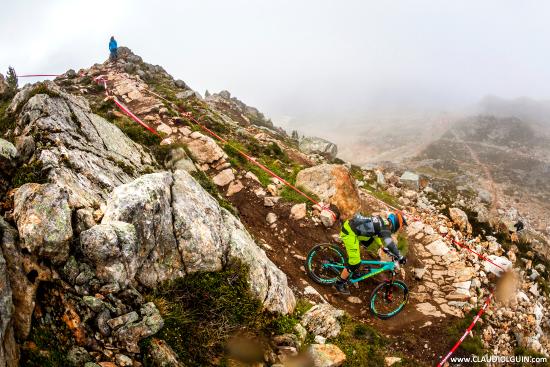
Shred this with a Whistler bike pass!
There are two types of mountain biking in Whistler: downhill and cross-country. The downhill biking in Whistler Bike Park includes over 250km of trails. These can all be accessed by five bike-adapted chairlifts. That means zero pedalling uphill for you!
On the other hand, if you prefer to earn your turns, you can explore the 300+km of cross-country trails around Whistler valley. Many of these are classics in their own right, and deserve a bit of hard work to explore.
And if you fancy a more sedate, less bumpy bike ride, you can spend a day cruising around the Valley Trail. This paved trail meanders over 40km through Whistler and the surrounding neighbourhoods. It’s accessible to bikes, skateboards, rollerblades, walkers and even buggies. So go explore!
What is there to do in Whistler in the rain?
While we’re blessed with some brilliant weather throughout the summer, we can’t pretend it doesn’t sometimes rain in Whistler. We are in the rainforest after all. But there’s still plenty to keep you entertained. Personally, we’d recommend coming to visit us at Forged Axe Throwing, the best rainy day activity in Whistler (in our humble opinion).
But some other things we love on a rainy day include: the Escape! Rooms, the Audain Art Museum, Squamish Lil’wat Cultural Centre, any of Whistler’s many spas, a swim at Meadow Park Sports Centre, Whistler Core climbing wall, and much, much more. Or make like a local and simply throw on your raincoat, head outside and play in the rain!
Whistler Mountain Basics: What You Need to Know
Before you book your trip to Whistler, it’s worth getting to know the town a little bit. So here’s all the basics you need to know before you arrive.
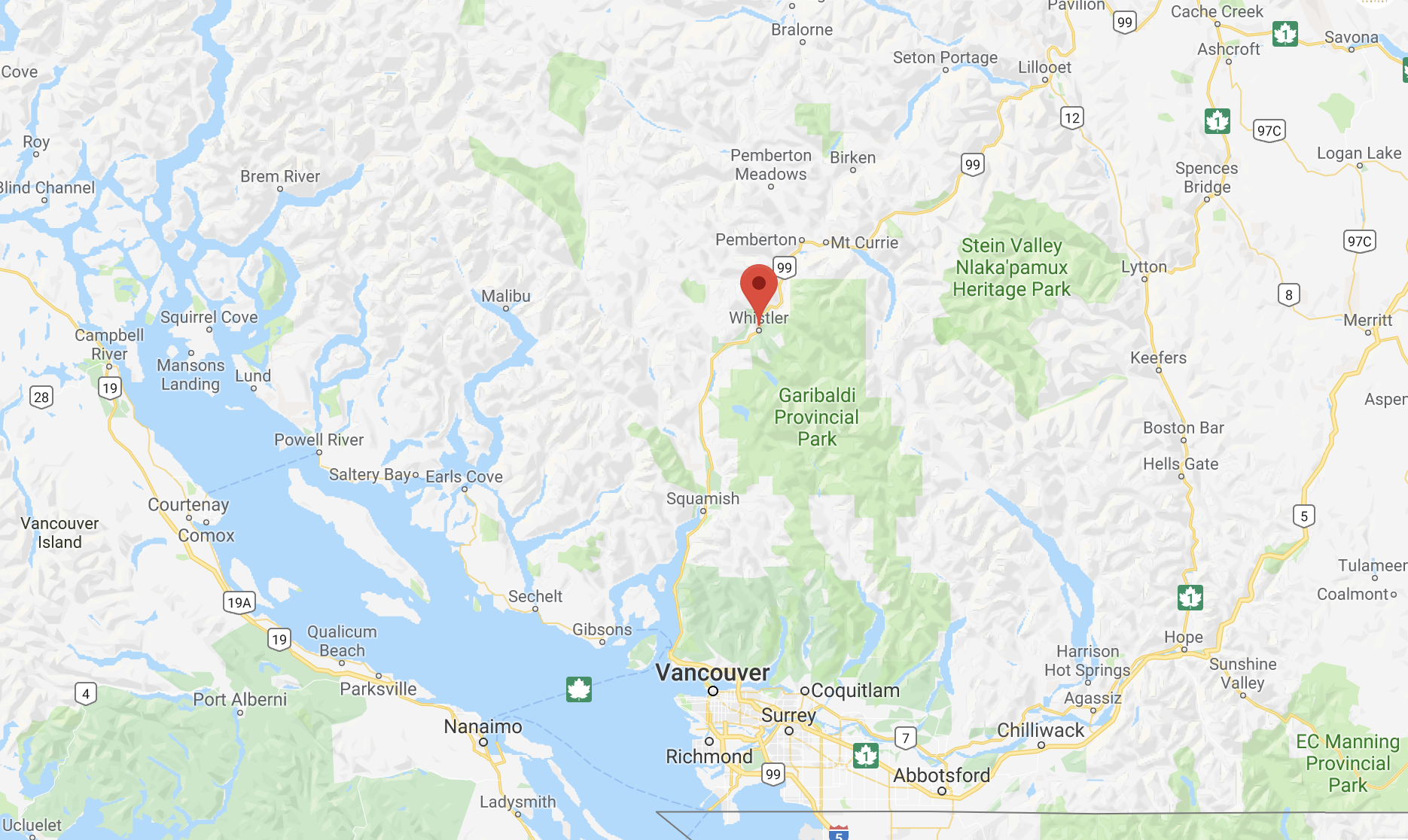
Just in case you wanted to know.
Where is Whistler?
Whistler is one of the most accessible ski resorts in the world. It’s on the west coast of British Columbia, Canada, close to the Pacific Ocean. The closest major city is Vancouver, less than two hours south of Whistler along Highway 99. If you want to get really precise, you can find us at 50º 9’N, 122º 57′ W.
How did Whistler get its name?
You’ll hear lots of intriguing stories about how Whistler got it’s unusual name. But the real answer is pretty great too. Originally, Whistler was called London Mountain. But noone wants to go skiing in a dreary British city! So in 1965, when the Whistler ski resort was founded, the founders were looking for a new name.
They settled on Whistler for the unique whistling sound made by the resident (and adorable) hoary marmots. If you’re hiking in Whistler in summer, listen out for their distinctive sound – you might even catch a glimpse of one of the cute creatures if you’re lucky.
Which airport is closest to Whistler?
The closest airport to Whistler is Vancouver International, approximately 2 hours from Whistler by car or bus. You can fly to Vancouver from most international airports in the world. If you’re looking for help on how to get to Whistler, we’ve got you cover with our complete Whistler travel guide.
How far is Whistler from Vancouver?
Whistler village is approximately 120km from Vancouver. Driving takes between 1.5 and 2 hours, depending on the traffic and road conditions (it can be longer in winter). The journey is spectacular, so take your time and enjoy some of the sights of the incredible Sea to Sky Highway.
What mountain range is Whistler in?
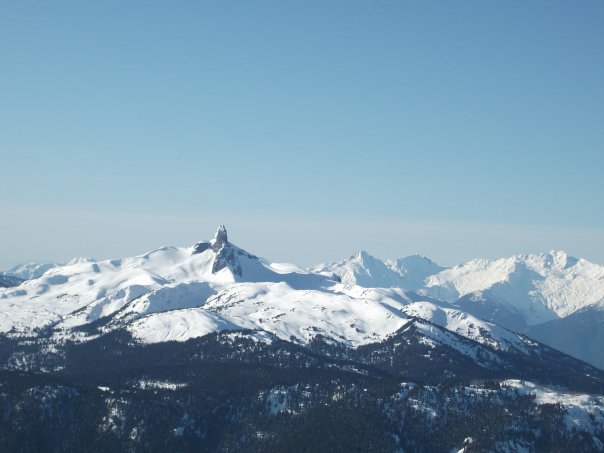
A bright sunny day, you’ll see Black Tusk at many view points along the highway
Whistler is part of the Fitzsimmon’s Range in the Coastal Mountains of BC. The Coast Mountains are an enormous range that stretch 1,600km from Alaska to the south of BC, and 300km east to west. They’re also part of the “Ring of Fire” – a range of volcanoes on the Pacific Coast. You’ll spot a few peaks around here with fascinating volcanic shapes: in particular the iconic Black Tusk, which you can spot from Whistler peak.
When was Whistler Blackcomb founded?
The first ski resort was built in Whistler in 1965. Back then, it was just Whistler Mountain, and it remained that way for a few decades. Until a competitor came onto the scene, in1980, in the form of the newly opened Blackcomb Mountain.
For a couple of decades after that, the neighbouring resorts competed to attract skiers by building more lifts and opening more and more terrain. And lucky for us, because that competition eventually gave us the best ski resort in the world. In 1998, the two resorts merged to create the largest resort in North America, and just four years later, they were awarded the 2010 Olympic Games!
When was Whistler village built?
You can’t imagine it now, but until 1978, the site of Whistler village was actually a rubbish dump. The original village base was in Creekside, where the first lifts were built. Luckily, in 1978 the town started developing the pedestrian village that we now all know and love.
When is the best time to visit Whistler?
An increasingly difficult question: every time of year is awesome in Whistler. The most popular months to visit are December – March, and July – August. You’ll be guaranteed great skiing in the winter months, and world-class adventure in summer.
But the shoulder seasons (April – June and September – November) are a great time to visit too. You’ll get lower prices, quieter streets, and there’s still heaps of incredible outdoor activities to explore.
It all really depends what you’re looking for, and we couldn’t possibly answer in this small a space. But luckily we’ve created a locals guide to the best time to visit Whistler which will answer all your questions!
Still got burning questions about Whistler?
Hopefully we’ve filled in the gaps and armed you with everything you need to book your vacation to Whistler! But if that isn’t quite enough, check out our full blog. We’ve done the hard work and researched everything from the best brunch spots, to the best bachelorette party ideas, to our favourite camping spots. And we’re always adding new articles, researched by locals, to help you plan the ultimate Whistler vacation!
